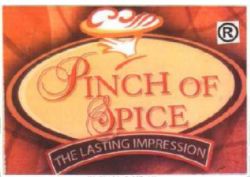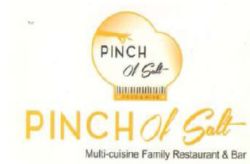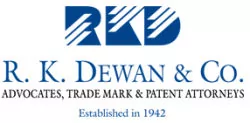Patenting block chain inventions
In the year 2008, a paper by a certain Satoshi Nakomoto resulted in creating an alternative online currency –the bitcoin. This currency allowed its owners to directly transact online without the requirement of an intermediary. This system of online transaction operated through a bitcoin block chain which was basically a database that recorded the bitcoin transactions. This ledger was distributed across a peer to peer network i.e. there is no central computer which regulates this transaction, and the parties to such transactions, have to approve its validity pursuant to which the transaction is recorded. The records of the transaction cannot be tampered with once it has been added to the block-chain. Soon after, individuals in different sectors came up with ideas to adopt this block chain technology for their services as well. This led to the evolution of the block chain technology in different sectors.
Block-chain technology is basically a ledger of transactions, maintaining the complete trail of a project, with real time updates. This can be better understood through an illustration –A,B and C are simultaneously working on a project 'X'; the documents pertaining to the project can be accessed by all three at the same time and the changes can also be made by the three people simultaneously. In a block-chain, the version of the document created by the three will be saved individually, in real time, thereby easily identifying the author of each version. This history can be traced at any later point of time as well. If the project discloses a particular invention, it can be easily traced to find the inventor, without any confusion.
It is due to this resourceful nature of adopting block-chain technologies that various companies are rushing to file patent applications pertaining to improvements in the same and claim exclusivity over the use of such improvements. It is anticipated that the block-chain technology may revolutionize the music industry. The use of block chain technology might dispense the need for the middleman (record labels, copyright societies) to regulate the payment of royalty to the artists. This may be enforced by the smart contract system i.e. a digital contract in which the individuals involved in making the musical work are duly attributed and will be paid royalty on decided terms each time that work is streamed/downloaded.
The records available at the time of writing this article suggest that the Bank of America and Goldman Sax have filed the maximum number of patent applications related to block-chain technology particularly in the finance sector. Closer home, the State Bank of India has initiated the Bank-Chain, India's first Block-chain exploration consortium for banks. In the recent times there has been a rush to obtain patent grant for block-chain related inventions but a major hurdle in the grant of such applications lies in the fact that such inventions are computer related inventions and may be classified as non-patentable subject matter. It is necessary that the invention disclosed in the patent application is not an abstract idea and discloses a novel invention. It will be interesting to note the grant of patents on block-chain technology related inventions and its implications in various everyday transactions.
Communication of protected images to public and search engines
In the year 2016, the CJEU in the case of GS Media BV v Sanoma Media Netherlands BV, decided that linking of protected content on a third party website where the work has been published without consent of the right holder, amounts to an act of communicating the work to public. A case of infringement is made out particularly when such hyperlinking is done with the purpose of earning profits, then it is presumed that the linker was aware of the fact that no consent of the right holder was obtained and the communication to public was deliberate. However, this ratio of the CJEU was interpreted in a slightly different manner by the German Federal Court of Justice recently.
In the recent case, the applicant owns a website where photographs are posted and these are subject to protection under copyright laws. The copyrighted pictures can be viewed only by registered customers of the website upon the payment of a fee; the customers can download these photographs on their device. There may be certain customers that also make available this protected content on a freely accessible website. Therefore, if in the future another individual, not the customer of the Applicant, searches for images which are proprietary to the Applicant, it is possible that the Google search engine may direct such individual to access the protectable content on the freely accessible website. It was the case of the Applicant that in such situation, by the application of the GS Media case ratio, Google would be considered as communicating the work to public even though it is without the authorization of the right holder. The Applicant claimed that the fact that its protected images were available as thumbnails on Google Images therefore it was claimed that Google was also communicating the protected work to public. It was ruled by the German court, that the ratios of the GS Media case will be applicable if the linker knew or had reasons to know that such work was protected and had been uploaded on another website without permission. However, considering the nature and necessity of search engines it could be difficult to prove that the search engine was well aware of the illegal activity; it is practically not possible for search engines to check the veracity all the websites before a preview of the images available therein is made available.
Therefore, to make out a case of communication to public and thereby infringement it is necessary that the party alleged to have committed such act, is itself aware that the website it is linking to, provides access to unauthorized content. The premise of this judgment is based on the fact that if such restrictions are imposed on the search engines it will impair the working of a free internet and it may not be fair to do so. This is an interesting understanding of the GS Media case and it remains to be seen if other jurisdictions also follow a similar understanding or will deviate from the German decision.
Overcoming Infringement
If the copyright claim over the song 'Happy Birthday' was surprising, it is even more surprising to note that the song 'We shall overcome' was protected under copyright. The Song 'We shall overcome' is closely associated with the American Civil rights movement and it is claimed to have originated as the song 'We will overcome' which was first published in 1909 in the United Mine Workers Journal. In the case of We Shall Overcome Foundation And Butler Films, LLC & Ors v The Richmond Organization, Inc. and Ludlow Music, Inc., the Plaintiffs claimed that the Defendants were incorrectly asserting copyright over the song 'We Shall Overcome' which is substantially similar to a song that is already in public domain. Plaintiff No. 1(We Shall Overcome Foundation) required synchronization license from the Defendants for using the song in its documentary, but the same was denied.
The Defendants claimed that they had a copyright registration for the song, thereby establishing prima-facie rights of the Defendants in the song. The Defendants claimed that there was substantial difference in the first verse lyrics of its copyrighted song and the song in public domain; the following is the comparison:
| We Will Overcome (in Public Domain) | We Shall overcome |
| We will overcome | We shall overcome |
| We will overcome | We shall overcome |
| We will overcome some day | We shall overcome some day |
| Oh down in my heart, I do believe | Oh deep in my heart I do believe |
| We will overcome some day | We'll overcome some day |
The judge presiding over the matter heard the parties and agreed that there was no substantial difference between the song in the public domain and the song claimed to be protected under the Copyright act. It was also noted that the song was originally published in 1940's by the folk singer Pete Seeger. In the event that the Defendants' song is a derivative work from the song already in public domain, the onus was on the Defendants to prove that it was capable of being protected under copyright laws. It was further ruled that the Defendants' variations were not distinguishable. The Defendants' arguments that the copyright protection for the song prevented any potential misuse of the song were rejected by the Court, it was ruled that the requisite of originality had to be met to provide copyright protection to a work.
The song 'We shall overcome' has attained the stature of an iconic song, representing hope in difficult times; also the fact that the song has been in existence for almost a century makes it surprising that the Defendants obtained a copyright registration and successfully commercialized it for so long. Copyright laws do not require the work to be novel, but it has to be original, substantial similarity between two works can be the grounds for not permitting copyright registration. This is another instance when an entity was prevented from misusing copyright laws from unjustly enriching itself.
Song titles as trade marks
Certain sound recordings leave a lasting impact in the minds of people, and in modern times such songs 'go viral' or are 'trending' in social media platforms. These sound recordings also tend to become associated with a particular singer or the composer, few such examples will be the songs 'Gangnam Style' and 'Kolaveri Di'. These songs gained such popularity that even the titles of the song are now intrinsically associated with the singers of these songs. It is for this reason that the marks 'Gangnam Style' and 'Kolaveri Di' have also been registered with the trade mark registry to avoid any third party from exploiting such titles in any manner whatsoever.
One of the reasons for registration of song titles as trade marks is that there is no copyright protection offered for song titles; furthermore, in recent times various television shows, movies use existing song titles as the name of the T.V. show/movies. In the year 2007, the band Red Hot Chilli Peppers filed a suit against Showtime Networks Inc. for producing the show 'Californication' which is also one of RHCP's most popular songs and album name. The matter was later settled and Showtime Networks Inc. also abandoned its trade mark application No. 77152641. Similarly, in May 2017, the band 'Eagles' filed a suit against Hotel California Baja LLC , in Mexico for insinuating a connection between the hotel and the record breaking hit 'Hotel California' of the band. It has been claimed that the hotel was also actively selling merchandise such as T-shirts, posters, sweatshirts, bathrobes, mugs, guitar picks etc. exploiting the band's name and its cover art from the album 'Hotel California'. It has been claimed in the suit that such activities of the hotel has led individuals to believe that the Hotel is indeed the Hotel that inspired the band's popular song. The case is pending before the U.S. District Court in Los Angeles.
In India, legendary music Composer Mr. A.R. Rahman's attorney sent a cease & desist notice to Sohail Khan Productions for using the mark 'Jai Ho' as a film title, it was claimed that 'Jai Ho' happens to be the composer's popular song for which he even won an Academy Award for Best Original song and Grammy for best song written for a motion picture. The matter was later settled and the movie titled 'Jai Ho' was released.
These instances clearly show that even though no copyright protection is offered to song titles, a stronger protection may be obtained in the form of trade mark rights. Furthermore, in some cases it is true that a particular song becomes associated with a particular movie/band alone. However, an important factor to be considered at the time of filing for registration of song title as trade mark is regarding proving the use of the song title after registration. The Indian trade mark law specifies that if a trade mark is not used for commercial purposes after five (5) years of registration it may be removed from the trade mark register. Secondly, even if certain songs such as 'Jai Ho' become popular, it cannot be said that Mr. Rahman alone has the right over the phrase 'Jai Ho' since, the same is a common phrase in Hindi language.
It is therefore, an interesting point to ponder upon that even if a stronger protection may be available in the form of trade mark rights (to song titles), the same is vulnerable to challenge of non-use as well.
A pinch of salt
The determination of deceptive similarity between two marks is done by considering each trade mark as a whole i.e. the overall impression that such mark leaves on a lay observer. This issue gains more prominence when the trade mark used is a composite mark which comprises both word and device characters that add to its distinctiveness. In such cases there can be no monopoly claimed on the word mark alone because the protection is sought on the whole mark, even more so when the wordmark involved is a word common in the English language.
Recently in the case of Mehar Wing Services Private Limited and Ors v Jindal Restaurant the marks in question were 'Pinch of Spice' and 'Pinch of Salt' both being used in relation to services for providing food and drinks. The Plaintiff (Mehak Wing Services) claimed that it was a well-known restaurant in Agra which has been providing food and drinks services since 2007. The Plaintiff claimed that it was also promoting its services through advertising and its website www.pinchofspice.in. It was alleged that the Defendant's use of the trade mark 'Pinch of Salt' since 2015, as its trade mark for its restaurant in New Delhi amounts to an act of trespassing on the Plaintiff's rights in its trade mark. The Defendant's counsel submitted that its trade mark 'Pinch of Salt' was not in any case violating the Plaintiff's rights; it had adopted different style of writing, different color combination etc. It was also submitted that in accordance with the provisions of Section 17(2) it was clear that the proprietor of a trade mark cannot claim proprietorship of a part of a mark unless such part was protected under a separate trade mark application/registration. In the present case the Plaintiff did not obtain trade mark registration exclusively for the words 'Pinch of spice' therefore, they cannot claim exclusivity over the phrase "Pinch of'.
The two trade marks are as follows:

Plaintiff's trade mark

Defendant's trade mark
Justice Indermeet presided over this matter and concluded that upon applying the test of an ordinary man with imperfect recollection, it could be held that the Defendant's trade mark was not deceptively similar to that of the Plaintiff's mark. Therefore, there was no likelihood of confusion. It was held that though the Plaintiff has claimed that its trade mark is renowned, it was also a fact that the Plaintiff's activities were only confined to the city of Agra whereas the Defendant was carrying out its activities in New Delhi. The judge also took into consideration the fact that there were several applications/registrations for the mark 'PINCH' in the records of the Trade Mark Registry specifically in the food industry; based on this fact it was ruled that no exclusivity over the word 'PINCH' can be claimed in the food and drinks industry. Furthermore, the Defendant was carrying on its business since 2015 therefore, it couldn't be injuncted from using the mark 'Pinch of salt' as its restaurant name. This case clearly lays down the principle of considering a mark as a whole when determining trade mark infringement cases.
Right to renew in post-expiration period
The Trade Mark rules 2002 (now Trade Mark Rule, 2017) include provisions that allow trade mark proprietors to cure any defect in their trade mark/application if within the scope of the act. This is particularly, effective in the case of renewal of trade marks. Prior to the period of expiration the Trade Mark Registrar informs the proprietor of the trade mark regarding the requirement to renew the trade mark. In the event the proprietor fails to renew the trade mark prior to expiration, a grace period of 6 months is provided to renew the mark upon the payment of renewal fees and a surcharge for late renewal. After the 6 months grace period comes to an end the mark is removed from the register by the Trade Mark Registrar and such removal is advertised in the journal. From the date of advertisement of the removal of mark, the proprietor of the trade mark still has the right to apply for restoration of its mark. Failure to do so, results in removal of the trade mark from register.
In the case of Epsilon Publishing House Pvt Ltd v Union of India and Ors. the petitioner challenged the order of the Registrar of Trade Marks to renew the trade mark no. 1006905 for the mark 'Lokpriya Easynotes', claiming that such renewal was beyond the scope of the trade mark rules. The Petitioner claimed that the trade mark was registered until 02.05.2011 and no renewal application was filed prior to the expiration of the trade mark; the mark was applied for renewal on 19.05.2011 without the payment of surcharge. The Registrar of trade mark thereafter renewed the trade mark. It was the Petitioner's case that the mark should not have been renewed and should have been removed from the register. The Petitioner, through its advocate filed an application stating that if the mark is renewed it will affect the Petitioner's interest; not heeding to the Petitioner's application, the Registrar still renewed trade mark no. 1006905. It was further claimed that since the renewal application was not accompanied with the payment of a surcharge which is a pre-requisite, the application should have been rejected and the mark was not subject to renewal. It was also contented that Rule 25(3) of the trade mark rules, 2002 was an exception and will only be applicable on the payment of surcharge
The trade mark Registrar stated that the renewal applications are scrutinized and if there is any deficiency, the proprietor of the trade mark is informed and given a time period to rectify the deficiency. In the present case the renewal application for trade mark no 1006905 was not scrutinized but when the petitioner sent a letter for removal of the trade mark from the register, it came to the notice of the registrar that the surcharge had not been paid. Therefore, the proprietor of the trade mark was sent a compliance letter to pay the requisite surcharge amount; this was followed by the proprietor paying the surcharge of INR 5,000. In light of these facts the court was convinced that the Registrar of trade marks issued deficiency letters to rectify the same. Furthermore, the contention that, since the proprietor did not renew its trade mark prior to expiration, the mark ought to have been removed from the register even more so when the surcharge has not been paid for renewal, is incorrect. The proprietor had filed for renewal within 6 months grace period, after that the registrar could point out errors in the payment, if any. This could not be the grounds for removal of a mark from register. The argument of invoking rule 66 i.e. rights of affected party, was held to be incorrect, the court held that only when the trade mark was removed from the register at that time the registrar would have to take into consideration the rights of affected party prior to restoring the trade mark.
This was quiet an unusual case dealing with one of the most important provisions of trade mark laws. The renewal; of trade marks after ten years, is what gives the right a semblance of right which can exist in perpetuity subject to renewals.
Preserving Legacy
Movie stars, singers enjoy a large fan following, to the extent that the names and personality traits of certain actors also become synonymous with a particular celebrity alone. While personality rights are intangible rights, the same has been invoked by various celebrities in the recent times. Recently, a television show 'Dev Anand' was to be launched by Colors channel, India. The proposed title of the show 'Dev Anand' was misleading, as it was also the name of the legendary actor Dev Anand in the Hindi cinema. Furthermore, it is a known fact that Mr Dev Anand was closely associated with his roles in thriller films such as 'Jewel Thief'. 'Kaala Pani', 'C.I.D' etc. therefore, the fact that the title of the show was 'Dev Anand' and it was posed to be a thriller, increased the likelihood of confusion among the audience of the show being lead into believing that the show is in some way associated with Mr. Anand or is an adaptation of his classic movies.
We represented Mr. Suniel Anand, son of actor Dev Anand and sent a notice to the producers of the upcoming TV Show to refrain from using the name 'Dev Anand' as its title. The trade mark 'Dev Anand' stands registered in the name of our client, also it has been registered as a TV Show/movie title with the Film and TV Producers Guild of India Ltd., by our client. Therefore, the adoption of the name 'Dev Anand' by any third party as the title of a TV Show is incorrect. The matter was later settled amicably between the producers of the show and our client and the title of the show was eventually changed to 'Dev'.
It is important to note that the names of certain celebrities itself invokes their personality and it is possible that the use of such name may mislead the public regarding the nexus of the work with the celebrity. There also exists a likelihood of tarnishing the reputation of celebrities by the use of their name and likeliness in a work where no authorization has been obtained from the celebrity itself. Mr. Dev Anand is one of the legendary actors of Indian cinema and therefore, it is necessary to guard his image, reputation from being used in any manner without the consent of his heirs.
The content of this article is intended to provide a general guide to the subject matter. Specialist advice should be sought about your specific circumstances.


